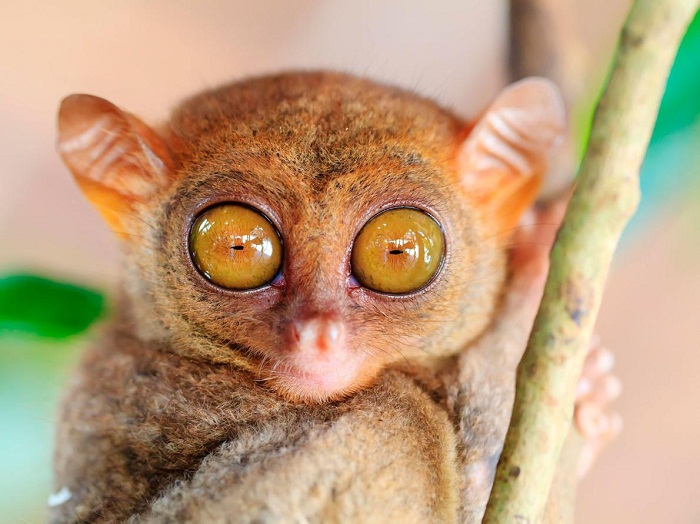This Animal’s Eye Makes Up Almost Half of Its Body

When Dwayne LaGrou asked Weird Animal Question of the Week what animals have the largest eyes for their body size, we were sure the answer would be guilty-looking dogs. The actual candidates proved to be some real eye-openers. Because animals are built so differently, figuring out which has the biggest eyes can be tricky, Sönke Johnsen, a biologist at Duke University, says via email.
Big Eyes in the Ocean
But some tiny marine animals, such as some hyperiid amphipods, clearly come out ahead. These include Cystisoma, a genus of transparent crustaceans whose giant compound eyes face upward on a head that takes up about a third of its seven-inch (about 18-centimeter) long body, Johnsen says. Paraphromina, another clear amphipod, has unique compound eyes, which look like rows of runway lights that face both upward and sideways. These peepers take up 45 percent of its clear, tiny body, which is only 0.3 to 0.7 inch (one to two centimeters) long. Clear bodies help these animals to avoid detection, and these enormous upward-facing eyes likely help spot predators swimming above. At an inch (about 2.6 centimeters) long, giant ostracods dwarf their smaller cousins, which can be just 0.004 inch (0.1 millimeter) long. The retinas of these clear, globe-shaped crustaceans sit in front of a mirrored plate that focuses light, causing some to compare their large eyes to car headlights. Vampire squid also have a high eye-to-body ratio. The deep-dwelling cephalopods grow up to a foot (0.3 meter) long, with eyes about an inch (about 2.6 centimeters) wide. These big eyes are helpful at ocean depths of up to 8,200 feet (2,500 meters). Michael F. Land, co-author of the book Animal Eyes, agrees that since so many animals have large eyes, finding the biggest relative to size is a tall order. But some nocturnal spiders, such as ogre-faced spiders, "come pretty high on the list," Land, a neurobiologist at the University of Sussex, says via email. Of their eight eyes, the two largest, front-facing ones are enormous, helping the arachnids in their nighttime quest for prey. Among insects, dragonfly eyes "are probably the biggest, with 30,000 lenses per eye" that collect overlapping images from every angle, says Katy Prudic, an entomologist at the University of Arizona.
Read More: http://news.nationalgeographic.com/2016/08/animals-biggest-eyes-crustaceans-squid-oceans/

